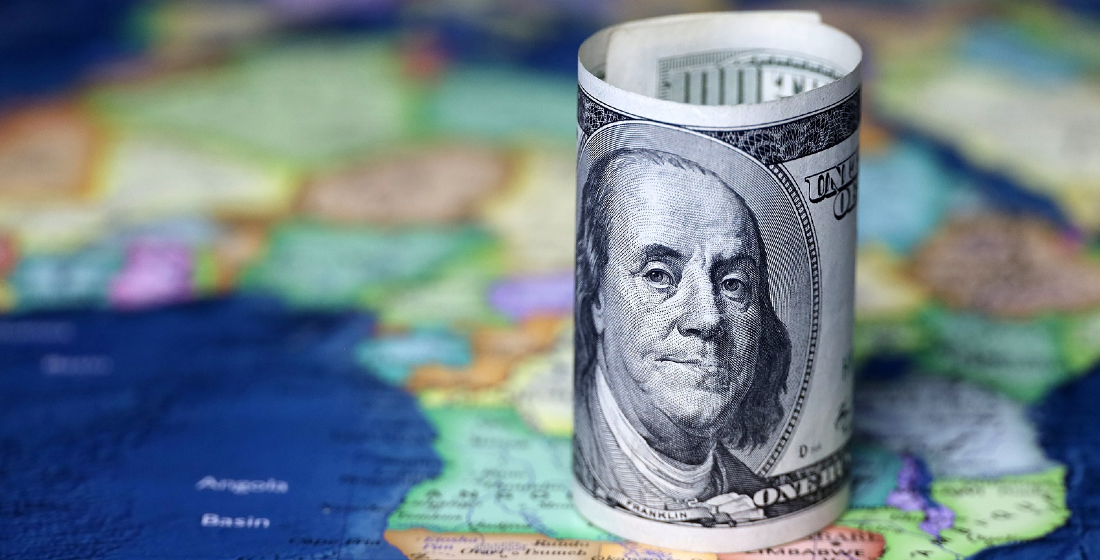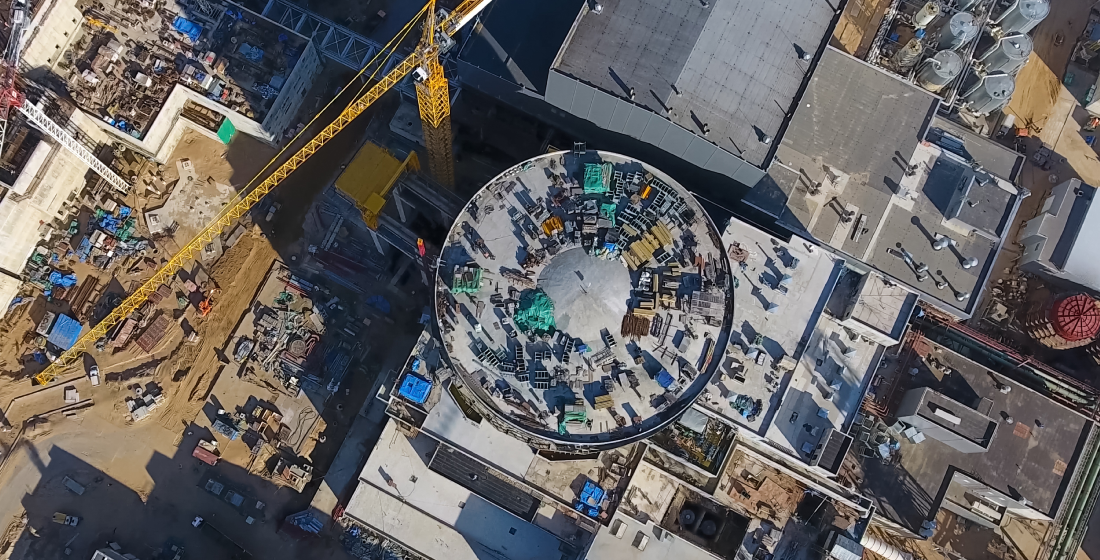Ukraine conflict: The Africa trade balance
The impact of conflict in Ukraine on the world economy is not difficult to summarise: bad. In the case of Africa, it is much more complicated because of the continent’s diversity: good and poor agriculture, energy wealth and energy poverty. TXF investigates the immediate, and longer term, implications.

The impact of conflict in Ukraine on the world economy is not difficult to summarise: bad. In the case of Africa, it is much more complicated because of the continent’s diversity: good and poor agriculture, energy wealth and energy poverty.
The impact on trade is similar but hard to quantify accurately. Statistics are always out of date but COVID-19 has meant that long term trends have been obscured by recent and country specific changes. But some things can be asserted. This is a crisis of primary trade (agri, metals and hydrocarbons) and its ancillaries (feedstock to fertiliser) and not primarily of manufactured goods. Nor does it necessarily mean an additional shortage of (or an additional risk to the availability of) trade finance from the traders and bankers who facilitated this open market dollar-based commodity financing.
The complexities for Africa are both in terms of a geopolitical challenge as African nations weigh their historic relationships with superpowers, and of risk, in particular for those countries dependent on imports of soft commodities. Meanwhile, there is a delicate balance to be struck of potential opportunity for energy producing countries of energy security and of sustainability.
Some of the biggest immediate effect on Africa trade is on soft commodities. How will different African countries be affected by sanctions on fertiliser, wheat and other food crops – and the cessation of Ukrainian soft commodity exports? While parts of the world have relied on Russia’s oil and gas, the world also relies on its cereal exports.
But some lessons can be drawn. Some of those go back to 2014, to Russia’s annexations and early sanctions, to sovereign debt risks, and some hope which can be drawn for improvements in capital expenditure in the continent’s energy sector.
The full extent of this hadn’t been featured until recently. After the last crisis in 2014, with the oil and gas embargoes at the time, Russia began to focus more on cereals. Rebecca Harding, CEO of Coriolis Technologies told TXF in a Trade Risk Briefing on 8 March, “What's interesting about this is that around 2015 Russia actually overtook the US as a major exporter of cereals, particularly wheat and meslin [a crop of wheat and rye sown and harvested together].”
Indeed, USDA figures reported by Indexmundi show the Russian Federation as the second largest exporter of wheat by volume in 2021 (behind the EU), and Ukraine in fourth, one place above the US.
Food security is an increasing challenge. Many African countries will have time to adjust to higher fertiliser, wheat, and fuel prices. But others will feel an immediate shock because of a dependency on Black Sea wheat and corn. “We remain particularly concerned about Egypt and Sudan,” cautions Robert Besseling, CEO of Pangea Risk, an Africa-Middle East risk consultancy. “Both countries will undoubtedly witness bread price riots in coming weeks or months that could pose threats to political stability. We are already warning our clients about these risks and we are reminding them that Egypt and Sudan’s previous long time dictators were ousted at times of high bread prices.”
Egypt is one of the biggest importers of Ukrainian and Russian wheat, relying on imports from those countries for around 80% of its needs, from which it produces subsidised bread. In late February, Egypt made some attempts at import controls via mandating the use of LCs rather than cash against delivery for specified imports, but the central bank excluded essential such as grain from the new import rules. On 9 March, Prime Minister Mustafa Madbouly announced the country had ‘strategic reserves’ to the end of the year and would be avoiding ‘specific sources’ of wheat. "Russia and Ukraine were our main source of wheat but we have already started to diversify our sources…for imports in future deals," Madbouly told a press conference.
Besseling adds that African agricultural producers are also dependent on urea and phosphate-based fertilisers, which are at risk of supply disruption. Ukraine and Russia produce and supply fertilisers and the raw materials to make them. For instance, Yara, the Norwegian group which is the largest producer and supplier of fertilisers in Europe, manufactures in Ukraine. Russia produces just under 10% of world nitrogen and phosphate fertilisers and, along with Belarus, is a major supplier of potash.
How will inflationary and logistics issues impact Africa in particular?
“African sovereigns usually absorb the higher costs of fuel and wheat at times of high inflation. The ability of many African sovereigns to do so will be more constrained this time as most markets are still recovering from the pandemic shock. Countries that were considering phasing out subsidies, such as Zambia, Tunisia, and Nigeria, are already putting such plans on ice for this year. The IMF and other creditors are becoming concerned about the impact of such fiscal pressures on debt sustainability,” says Besseling. “I see at least two more African default scenarios this year, after Zambia in 2020 and Mali this year.”
The energy producers: Has the balance changed?
Does Besseling believe that there will be more opportunity for African energy producers? After all, last year on paper Nigeria’s oil collateral was worth less than sovereign loans on its energy production. “There is certainly a short term, and perhaps longer term, opportunity for African oil producers such as Nigeria with crude prices exceeding $120 per barrel, which is double the government’s budget benchmark price,” he says. “European importing countries are holding urgent talks with Nigeria to secure natural gas supplies through LNG or even by pipeline, through the planned Trans Sahara Gas pipeline. Nigeria’s oil production has slumped to below two million bpd, which could easily be increased to three million bpd if US and European investment is confirmed. This scenario is a drastic about-turn in fortunes for Nigeria’s fossil fuels sector, which has suffered from long term divestment.”
The $13 billion Trans Sahara Natural Gas Pipeline, through which Niger will commercially benefit from its natural gas reserves, is being developed through a partnership between Nigeria’s national oil company the Nigerian National Petroleum Corporation and Algeria’s Sonatrach, with a 10% holding from Niger’s government.
This is one example of a general trend in capital expenditure highlighted by the African Energy Chamber’s first quarter report, the State of African Energy. It forecasts capital expenditure in oil and gas will reach $30 billion in 2022 after a decline from $60 billion in 2014 to just $22.5 billion in 2020. The contraction followed COVID-19 pandemic spending trends and energy transition-related divestment in Africa and the oil price falls of the early 2010s. The report expects upstream spending to rise and if deferred/postponed projects are reinstated, for spending to top $49 billion by 2024.
Nonetheless, for exporters and importers, there is the China dimension to consider. What will be the effect of higher energy and metals demand and prices on commodity reserve-backed loans from different countries in Africa? “Most African commodity exports will increase in value this year, from softs to crude and metals. This will have little impact on Chinese commodity-backed loans where prices were contractually pre-set,” Besseling points out. “So Angolan, Zambian, and DRC debt to China is unlikely to be impacted by higher commodity prices. But for contracts that incorporate fluctuating commodity pricing, there will be some breathing space for African sovereigns.”
Energy imports impact?
Harding says that in terms of Russia’s energy exports to the African Continental Free Trade Area, the impact of sanctions and/or supply falls is unlikely to be large. “If we look at where Africa as a whole is getting its imports from, Russia actually isn't the biggest one. In fact it's relatively small. Saudi Arabia, obviously, for the whole of the African continent, is the largest, and a lot comes in from the Netherlands and is shipped down,” she says. “Russia had been increasing its mineral fuel trade and was beginning to have more influence between 2016 and 2018, and forecast was actually for this to continue to increase [before the invasion of Ukraine].”
For instance, when Coriolis Technologies undertook some analysis on Malta several years ago, Russia's trade with the island was significant. A lot of that oil and gas was going into Africa. “There’s a lot of trade that goes through places like Cyprus, Turkey and Malta, hidden trade that comes into Africa as well. There were distortions in 2020 because of the pandemic and trade in value terms was distorted, but Russia had been trying to gain influence which may not easily be seen in mineral fuels as such.”
Geopolitics in action
Is South Africa (in particular) facing a bind with its relationships with Russia on the energy front? It, along with China, notably was one of the 35 countries abstaining (and a further 12 not voting) at the UN General Assembly resolution demanding an end to the Russian offensive in Ukraine. A total of 141 countries voted in favour of the resolution, which reaffirms Ukrainian sovereignty, independence and territorial integrity. More than half of the countries abstaining or not voting were from Africa. How does Besseling see that energy conundrum playing out for South Africa above all?
“South Africa’s proposed purchase of six Russian nuclear reactors is dead in the water, although relations remain warm based on political and ideological ties. The government is steering towards the west to attract foreign investment, while factions of the ruling party remain committed to loyalties to Russia,” says Besseling. “For South Africa’s president, who faces an internal party re-election contest later this year, the situation is politically perilous. Western governments may not quickly forget South Africa’s abstention at the UN General Assembly vote in February.”
The China angle is an interesting, and challenging one. China’s Belt and Road Initiative (BRI) is in a process of adjustment, particularly as outlined in the Forum on China-Africa Cooperation in Senegal last November. Will there be any more developments on BRI or any moves from China to fill any further finance gaps left by Russia?
“China is not withdrawing from Africa, despite some pundits’ recent comments following FOCAC in Dakar,” Besseling says. “But China is certainly adjusting its relationship with Africa from one based purely on infrastructure-for-debt, to a mutually enhancing trade relationship. This means that there will be less BRI investment in coming years and more of a focus on value-based industries and trade finance initiatives. That said, China will remain the largest investor in African infrastructure for years to come.”
As Russia is pushed out of some African markets, there may be opportunities for Chinese military security cooperation, mining, or nuclear projects, Besseling says. “But Russia’s commercial role in Africa is arguably negligible compared to China, Europe, and the US.”
Will other lenders be more sanguine about Africa energy risk or are there other issues at play such as ESG concerns? Energy security may well be a bigger driver than energy sustainability – at least in the short term – but many European lenders are adamant that both must continue to go hand in hand.
African energy markets offer lots of reasons to be optimistic, Besseling argues. “There are still nascent exciting oil and gas assets, such as Namibia’s recently discovered massive fields, as well as the assets in Kenya, Uganda, Tanzania, Mozambique, and Senegal. Political risk will be the main obstacle for lenders – have countries over-leveraged? Are there reputational or contract risks? Or will a change in government raise contract review risks? These are prominent threats to African energy assets that lenders deal with on a regular basis"
Become a TXF subscriber for unrestricted access to TXFnews.com 365 days a year
Contact us for individual and team rates by emailing subscriptions@txfmedia.com
Take a look below at some of the exclusive subscriber articles published last week
TXF Trade Risk Briefing: Impact on trade of Ukraine-Russia crisis
In this interactive briefing we look at the trade data emerging from the fast evolving Ukraine-Russia crisis....Read on here
DFI cooperation – a future casualty of war?
From the balance sheet to the boardroom, the implications for some DFIs and supranationals from Putin’s invasion of Ukraine are more than just indirect hits from sanctions....Read on here
AMEA Power out to banks for Abydos solar PV
AMEA Power is out to banks for a debt package to finance its 500MW Abydos solar PV in Egypt.....Read on here
Benny Zachariah moves to JP Morgan
Benny Zachariah is due to move to JP Morgan from the Asian Infrastructure Investment Bank (AIIB) where he is currently senior investment officer...Read on here
CAP2 project out to banks
Chandra Asri Petrochemical (CAP) is out to banks with the financing for the expansion of its petrochemical complex in Cilegon, Indonesia...Read on here
Zelechowo wind farm project financing signed
Energix Renewable Energies has signed the PLN288 million (€60 million) project financing of the....Read on here
Chile issues world's first sustainability-linked sovereign bonds
Chile has issued its first sustainability-linked sovereign bonds, under the country’s new Sustainability-Linked Bond Framework, published on 23 February 2022.....Read on here
EWEC issues Shuweihat S4 reverse osmosis RFP
EWEC has issued the request for proposals (RfP) for the 70 MIGD Shuweihat 4 (S4 RO) independent reverse osmosis water project to....Read on here
IFC eyes Uzbek wind farm financing
The IFC is expected to finance to the construction of the 500MW Zarafshon wind scheme in the Navoi region of Uzbekistan....Read on here
Glencore in syndication for European RCF
Singapore-based Glencore is out to banks for its annual European RCF.....Read on here
More details emerge on Trafigura’s $5.3bn ESG-tied refi
Singapore-headquartered Trafigura has closed the refinancing of its sustainability-linked European syndicated revolving credit facility – which oversubscribed and.....Read on here





